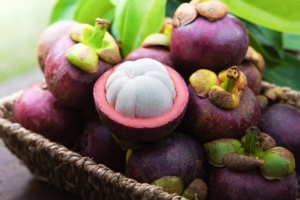In recent years, “Plant-Based Protein” has been rapidly gaining popularity worldwide, including in Thailand. This trend is driven by key factors including health consciousness, the demand for natural and transparent ingredients without excessive chemicals or additives, and the growing trend toward environmentally sustainable consumption.
Popular Plant-Based Proteins
Pea Protein
This protein is rapidly gaining popularity, with the market expected to grow at an average of 12% per year through 2033. It has easy-to-digest properties and is allergen-free, making it suitable for those allergic to soy or with other allergies.
Benefits:
Non-allergenic
Easy to digest, suitable for people with sensitive stomachs
High in branched-chain amino acids (BCAAs) (compared to other plant proteins), helping build muscle
Brown Rice Protein and Mung Bean Protein
These are beginning to be used in new products that focus on health and sustainability, such as “GreenTein”
developed by the Institute of Science and Technology, Thammasat University, which uses domestic raw materials and is environmentally friendly.
Why Are Young People Interested in Plant-Based Protein?
- Health Benefits
Low fat and cholesterol – suitable for those controlling weight and caring about heart health
Rich in fiber – helps improve digestive system function
Contains antioxidants – such as polyphenols and flavonoids, helping reduce the risk of heart disease and cancer
Research from Harvard T.H. Chan School of Public Health found that consuming plant protein in higher proportions than animal protein can reduce the risk of death from cardiovascular disease
- Addressing Lactose Intolerance
For Thais who have lactose intolerance problems as high as 84-85%, plant-based protein is a safe alternative with no digestion issues or allergic reactions from dairy products.
- Meeting Sustainability Needs
Supporting consumption approaches that are environmentally friendly
Using less water resources and cultivation area compared to animal protein production
67% of Gen Z prioritize sustainability when purchasing products
Health & Lifestyle Trends Driving Modern Consumer Preferences
1.Clean Label: Consumers increasingly want natural and transparent ingredients, without excessive chemicals or additives.
2.Multi-functional: Proteins are now often supplemented with vitamins, minerals, probiotics, or prebiotics for additional benefits.
3.Convenience: Ready-to-drink products or easy-to-prepare options cater to busy urban lifestyles.
References
Food and Nutrition Gen Z Food Trends 2025
Gen Z’s Willingness to Adopt Plant-Based Diets – PMC Article PMC11241807, 2024
Lactose intolerance in Thai adults – PubMed ID: 15822548, Journal of Medical Association Thailand, 2004
Lactose Intolerance by Country 2025 – World Population Review, 2024
Quality of Soybean Products in Terms of Essential Amino Acids – PMC8398613, 2021
Soy: A complete source of protein – American Family Physician, 2009
Higher ratio of plant protein to animal protein may improve heart health – Harvard T.H. Chan School of Public Health, 2025
Potential Health Benefits of Plant Food-Derived Bioactive Components – PMC8068854, 2021
Plant Proteins: Assessing Their Nutritional Quality – PMC7760812, 2020
Thailand Protein Powder Market Size and Forecasts 2031 – Mobility Foresights, 2025
Complete vs. Incomplete Proteins – Onepeloton Blog, Cleveland Clinic, Swolverine, 2024
Soy Protein Market Research Reports – Future Market Insights, Persistence Market Research, 2025










